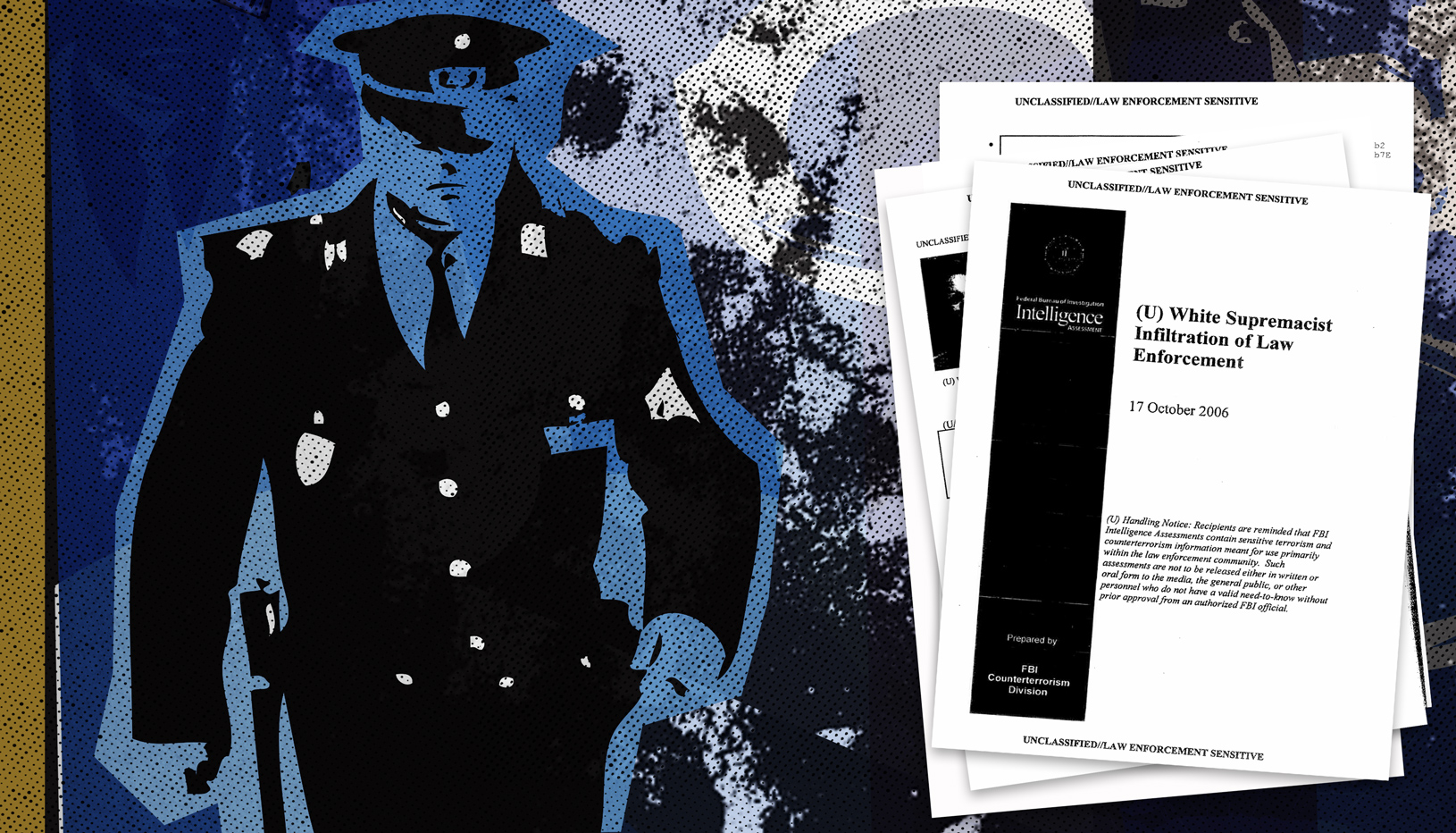The idea seems counterintuitive: Latinos, often targets themselves of racist hatred, supporting an extremist far-right movement with white supremacy beliefs. But recent events have exposed their involvement as both members and leaders.
They form a small but perplexing minority that includes Proud Boys ex-leader Enrique Tarrio, a Cuban-American convicted of seditious conspiracy for his role in the January 6 insurrection; Nick Fuentes, of Mexican-American descent and an outspoken white supremacist and antisemite who made news when he met former President Trump and rapper Kanye West at Mar-a-Lago last year; and Mexican-American Mauricio Garcia, who shot and killed eight people, most of them Latino and Asian, at a shopping mall in Allen, Texas, last May.
Former FBI agent Mike German infiltrated white supremacist groups in the early 1990s. He talks below about multiracial extremist far-right groups and the government’s response to domestic terrorism.
German, the author of Disrupt, Discredit, and Divide: How the New FBI Damages Democracy, is currently working on a book about policing white supremacy violence to be published by New Press in the Fall of 2024.
Did you come across Latinos or other people of color in the white supremacist groups you infiltrated 30 years ago?
Yes. People assume that a white supremacist or far-right ideology is extremely rigid and exclusionary. In many ways it is, but it also has to fit into a very multicultural society.
One white supremacist who was a subject of an investigation in the 1990s grew up next door to and remained close friends with an Asian man. As our subject got involved in neo-Nazi activity, he sometimes brought this Asian friend to white supremacist events. And because they were friends and engaged in and appreciated similar kinds of activities, they reportedly even engaged in criminal activities together as well.
With Latinos, white supremacists identify anyone with European heritage as white. So as long as they said their ancestry traced back to Spain, they could therefore be considered European. The fact of having a Spanish surname wasn’t something that led automatically to exclusion, so they could participate as well.
Is there any sense of whether their presence in these groups has been growing?
It is difficult to talk about changes in the movement over time, and who gets counted and who doesn’t, because there’s so little that’s documented in an objective way, even something as concrete as acts of violence. No government agency tracks the number of people white supremacists kill every year.
Also, many people don’t want to affiliate with a particular group, either because those groups have ideas that they might not be fully on board with or because they’re afraid that if somebody in that group gets in trouble, that association could harm them.
But certainly, the growth of the Latino population in the United States will change the demographics of every group. As the growing Latino numbers create political power, the movement will need to incorporate them as “white” in order to have them as allies. Race is a social construct, so as our society changes the social identification of who is white — meaning part of the privileged class — also changes.
I think the growth of the movement also has a lot to do with politics, because white supremacists have been given a broader platform in mainstream politics. President Trump was openly racist, making it more politically palatable to express those views. Groups that gather for discussions about gun rights, abortion, and immigration are now including elements that could be openly or at least tacitly white supremacist. The result is a recruiting opportunity for white supremacists.
Why would white supremacist groups recruit people of color?
The groups recognize that their viewpoint isn’t popular, so they’re constantly trying to recruit people — even somebody who might not be entirely ideologically on board or racially pure. If that person comes out to a rally or participates in an act of violence, they’re going to be welcomed. The attitude is, if we ever get to the race war, we’ll be more discerning about who we let in, but casting a wider net can be helpful now.
Also, having a nonwhite person as somebody they can put out front aids in softening their public image. The Proud Boys are masters at this. They openly embrace white supremacy in some of their chapters, but as an organization they include people who appear nonwhite and who have a Spanish surname, or even Jewish people, as examples they can point to so they say, “We might have engaged in violence side by side with a group of white supremacists, but we are not white supremacists.” It helps them gain public support and assists in recruiting.
What is there to be gained by people of color, especially when they join movements that profess to regard them as inferior?
It’s better to think of it in terms of intent instead of skin color. The concept of white supremacy could be ideological — a belief that white people are somehow superior — or it could be simply an expression of what subgroup is powerful in the country, so the attraction to white dominance in this culture is an attraction to power.
In the history of white supremacist groups in the United States, you often see people with Jewish backgrounds who are attracted to them, or African Americans. And part of that is that they want to be seen as associated with power, or by their association they believe they can be protected from the racist abuse these groups might otherwise dole out.
Humans are complex. As an undercover agent, I came across a lot of violent people. So being attracted to a violent white supremacist group might be a way of just expressing their anger and exploring their interest in committing violence. With Mauricio Garcia, there are some suggestions that there were some mental health issues involved as well. Though it is important to make clear that people with mental illness are more likely to be victims of violence rather than perpetrators of violence.
How does this multiracial element affect or complicate the government efforts to respond to domestic terrorism threats?
Because the government tends to look at ideology as the driver and has all these social media monitoring programs to examine what people are saying, white supremacist groups who don’t fit the profile that law enforcement might be looking for could slip through the cracks. But if the government simply focused on the violence and the threat of violence, they would be much more successful, because none of these ideologies that the government brands as precursors to terrorism are 100 percent pure in practice.
The government must understand criminality — particularly violent crime, and then attack the instrumentalities of violent crime, including the ease with which people can acquire extremely deadly weapons, which are the common denominator in these mass shootings. We have to establish a regulatory process that actually works.
And if we start gathering the data of all these white supremacist crimes around the country, then we can see the connections between them and how they may be related to an ongoing criminal conspiracy that’s continuing to perpetuate violence, even as certain individuals within the organization go to jail. There’s a law on the books — the National Defense Authorization Act of 2020 — that requires the FBI to document incidents of domestic terrorism, including white supremacist violence. But so far, the FBI has refused to do so.
White supremacy is foundational to our country, particularly our criminal justice system. Many of the laws that police used to enforce — from the Fugitive Slave Act to Jim Crow — were openly racist. So we have to recognize how law enforcement’s reluctance to properly respond to white supremacist violence because of its own affinity for white supremacy remains a problem.









